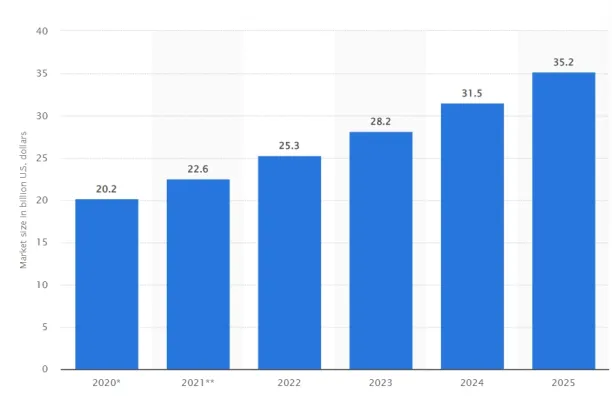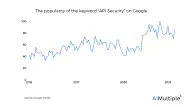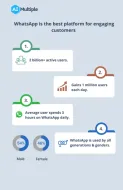Top 4 Use Cases of API in the Energy Sector in 2024
The energy sector must adapt to new customer and stakeholder requirements. According to EY:
- 94% of energy providers indicate fast responding to operations as a challenge.
- 36% of consumers are willing to pay more for sustainable energy.
- Customers preferred digital interaction in 8 out of 10 interactions.
Companies should opt for agile IT development to respond effectively to these challenges. API can be used for this purpose and increase the pace of digital transformation in the energy sector.
In this article, we will cover 4 use cases of API in the energy sector and demonstrate case studies of energy companies transforming their value offering with APIs.
1- Technology Integration
API enables the transmission of the collected data. These data can be integrated into a company application or can be analyzed to generate insight.
API can utilize IoT-generated data as IoT is a major trend in the energy sector. The value of IoT in the energy industry is expected to reach more than $35 billion by 2025 (see Figure 1).
An example of energy API used for IoT integration is:
SMAPPEE
For instance, Smappe API enables the collecting & monitoring of solar, gas, and water consumption using API. Additionally, appliance events and appliance cost analysis can be retrieved using their API.
Figure 1. The expected value of IoT in the energy industry

Source: Statista
APIs can also integrate energy companies with mobile apps and third-party applications such as bill payments. Look at the BP case studies section for an example of an energy API case study in the mobile app.
2- Data collection & analytics
API can be used to integrate data and create predictive and monitoring models. Different types of data, such as:
- Historical and real-time prices of energy like gas and electricity,
- Temperature data,
- Equipment and power plant production,
- Consumption data,
- Carbon emission data
Data from different sources such as governmental agencies and third-party providers can be collected and integrated with the company’s internal data. Examples of energy APIs that can be used for data collection and analytics are:
Genability API
Genability API enables the collection of:
- Electricity tariff-related information such as tax and season-based tariffs.
- Electricity price information is based on zip code and consumption.
Cleanpower API
Cleanpower irradiance & weather data API allows the collection of meteorological data such as :
- Irradiance data
- Wind speed data
- Temperature data
3- Monitoring
API data can be used to monitor and set alerts for abnormal activities and equipment malfunctions. Using API for monitoring have the following benefits:
- Ensuring effective risk management for businesses since actions can be taken immediately to solve the problems.
- Conducting remote analysis as data is collected historically and in real-time and can be accessed from anywhere.
- Monitoring the performance metrics such as kilowatt-hour (KwH) and temperature for different locations.
Example of an energy API that enables monitoring is :
Schneider facility expert data API
Schneider facility expert data API enables monitoring and tracking data related to equipment and buildings. This API enables monitoring and setting alerts for events like :
- Cable overheating
- Voltage loss
- Equipment failure
4- Providing new products & services
Energy companies can leverage the connectivity API to provide new products and services. This is important as 52% of consumers indicate providing new energy products and services is a factor that demonstrates a company’s commitment to sustainability and greater ESG scores. An example of an energy API that can be used for offering new products & services is:
Solar inverter API
3rd party applications can use Solar inverter API to get access to solar panel data such as :
- Inverter info
- Real-time & historical production
Additionally, other utility data, such as thermostat data, can be combined with the information from this API. Energy companies can utilize this API to offer new products and services.
Case studies
In this section, we will take a look at how some well-known companies have been able to utilize API after adopting an API-led approach.
Nov.Inc
Nov.Inc is a global supplier of oil and gas equipment for drilling and production activities. They also provide supply chain integration and oilfield services. Their aim was to:
- Increase operational efficiency,
- Introducing new value propositions to their customers,
- providing real-time data from drilling equipment to conduct preventive maintenance.
Adopting API led strategy and using an API management tool resulted in:
- Creating new revenue opportunities by identifying possible up- and cross-selling opportunities,
- Reducing API time to market by 90%,
- Monitoring critical business services 24/7.
Sponsored
PULSE is an AI-based automated API testing tool created by Testifi. Leveraging PULSE for testing API can reduce cost and effort by 50%. Major companies like Amazon & Vodafone use Testifi services.
BP
API enables data to be shared with different parties and audiences. The increased access to API can improve innovation in the energy sector. For example, BP adopted an API-led approach which led to the creation of innovative products and services, including:
- Strala, a blockchain and IoT digital marketplace for trading solar energy.
- BPme, a mobile app that enables customers to find the closest gas station, pay for gasoline, and receive incentives.
The API-led approach of BP resulted in:
- 2 times faster app development.
- Creation of an incubation center that handles over 100 APIs.
If you have questions about how API can help you in the energy sector, you can reach us:

Cem has been the principal analyst at AIMultiple since 2017. AIMultiple informs hundreds of thousands of businesses (as per similarWeb) including 60% of Fortune 500 every month.
Cem's work has been cited by leading global publications including Business Insider, Forbes, Washington Post, global firms like Deloitte, HPE, NGOs like World Economic Forum and supranational organizations like European Commission. You can see more reputable companies and media that referenced AIMultiple.
Throughout his career, Cem served as a tech consultant, tech buyer and tech entrepreneur. He advised businesses on their enterprise software, automation, cloud, AI / ML and other technology related decisions at McKinsey & Company and Altman Solon for more than a decade. He also published a McKinsey report on digitalization.
He led technology strategy and procurement of a telco while reporting to the CEO. He has also led commercial growth of deep tech company Hypatos that reached a 7 digit annual recurring revenue and a 9 digit valuation from 0 within 2 years. Cem's work in Hypatos was covered by leading technology publications like TechCrunch and Business Insider.
Cem regularly speaks at international technology conferences. He graduated from Bogazici University as a computer engineer and holds an MBA from Columbia Business School.
To stay up-to-date on B2B tech & accelerate your enterprise:
Follow on

Comments
Your email address will not be published. All fields are required.